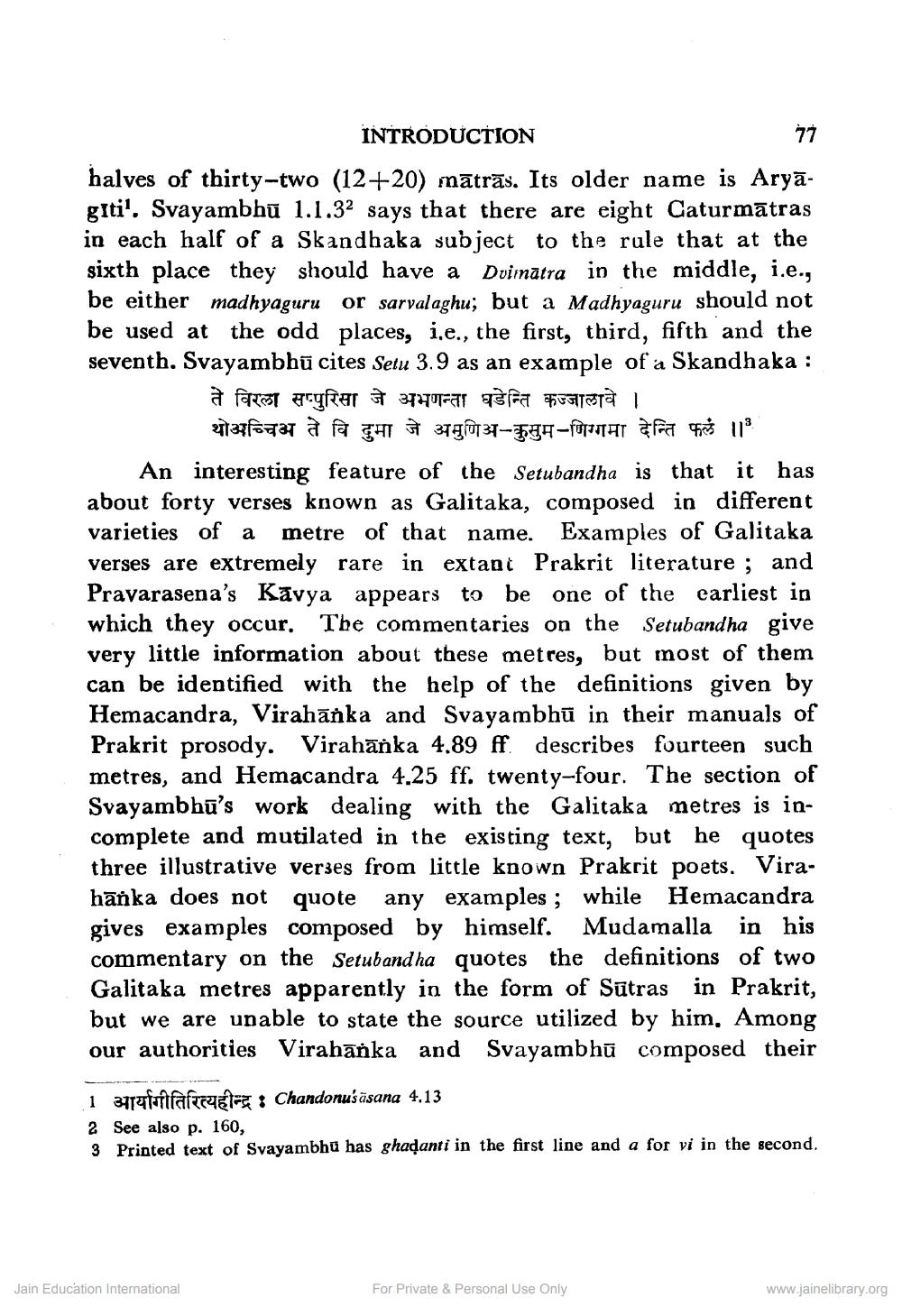________________
INTRODUCTION
לר
halves of thirty-two (12+20) mātrās. Its older name is Aryāgiti'. Svayambhū 1.1.32 says that there are eight Caturmātras in each half of a Skandhaka subject to the rule that at the sixth place they should have a Duimnātra in the middle, i.e., be either madhyaguru or sarvalaghu; but a Madhyaguru should not be used at the odd places, i.e., the first, third, fifth and the seventh. Svayambhū cites Setu 3.9 as an example of a Skandhaka :
ते विरला सप्पुरिसा जे अभणन्ता घडेन्ति कज्जालावे ।
थोअच्चिअ ते वि दुमा जे अमुणिअ-कुसुम-णिग्गमा देन्ति फलं ॥ An interesting feature of the Setubandha is that it has about forty verses known as Galitaka, composed in different varieties of a metre of that name. Examples of Galitaka verses are extremely rare in extani Prakrit literature ; and Pravarasena's Kāvya appears to be one of the earliest in which they occur. The commentaries on the Setubandha give very little information about these metres, but most of them can be identified with the help of the definitions given by Hemacandra, Virahanka and Svayambhū in their manuals of Prakrit prosody. Virahānka 4.89 ff. describes fourteen such metres, and Hemacandra 4.25 ff. twenty-four. The section of Svayambhū's work dealing with the Galitaka metres is incomplete and mutilated in the existing text, but he quotes three illustrative verses from little known Prakrit poets. Virahānka does not quote any examples; while Hemacandra gives examples composed by himself. Mudamalla in his commentary on the Setubandha quotes the definitions of two Galitaka metres apparently in the form of Sūtras in Prakrit, but we are unable to state the source utilized by him, Among our authorities Virahānka and Svayambhū composed their
1 Bryfoftrafreugts: Chandonusāsana 4.13 2 See also p. 160, 3 Printed text of Svayambhu has ghadanti in the first line and a for vi in the second.
Jain Education International
For Private & Personal Use Only
www.jainelibrary.org
www.jainelibri




